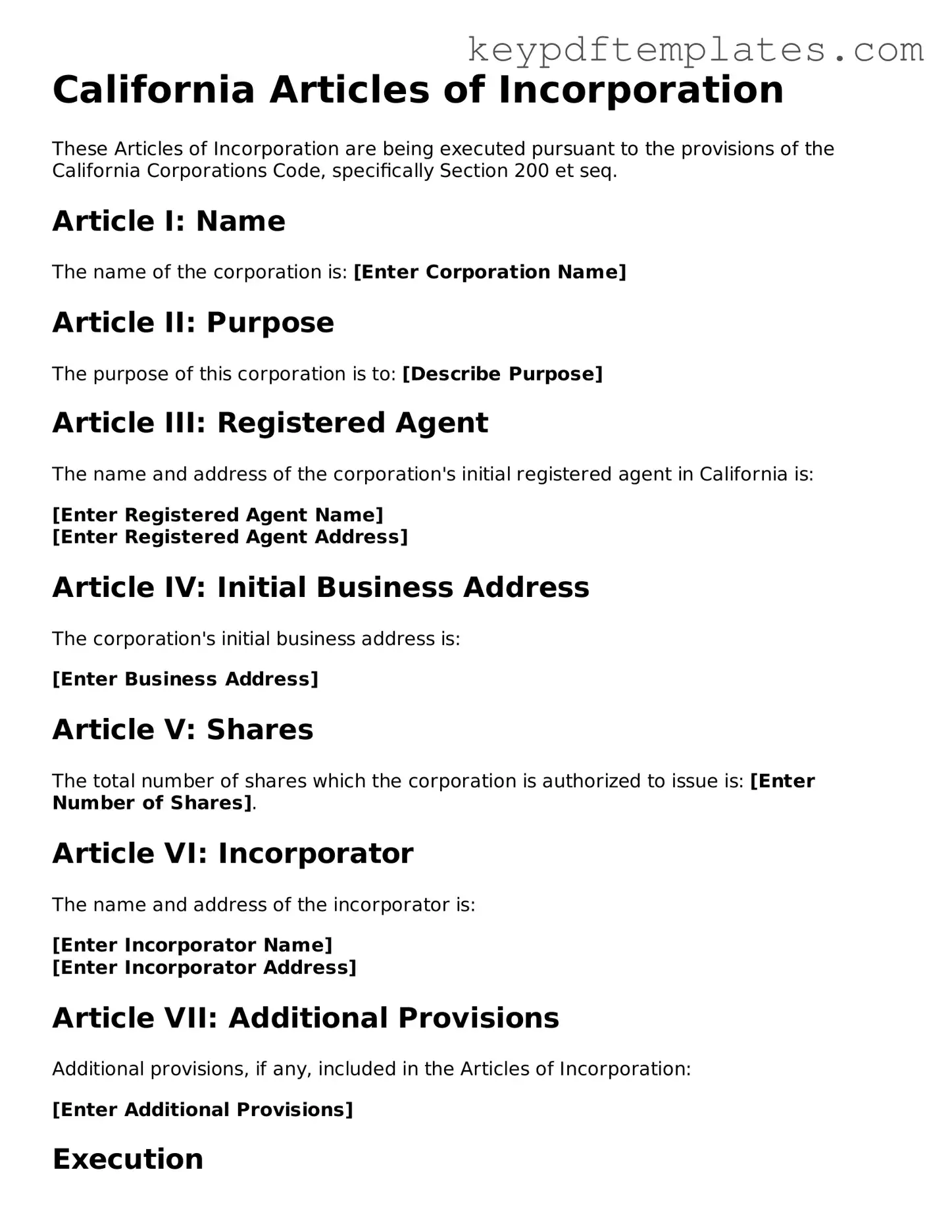Legal Articles of Incorporation Document for the State of California
The California Articles of Incorporation form is a crucial document that establishes a corporation in the state of California. This form outlines essential information about the corporation, including its name, purpose, and structure. Completing this form accurately is the first step toward legally forming a business entity in California.
Modify Document Online
